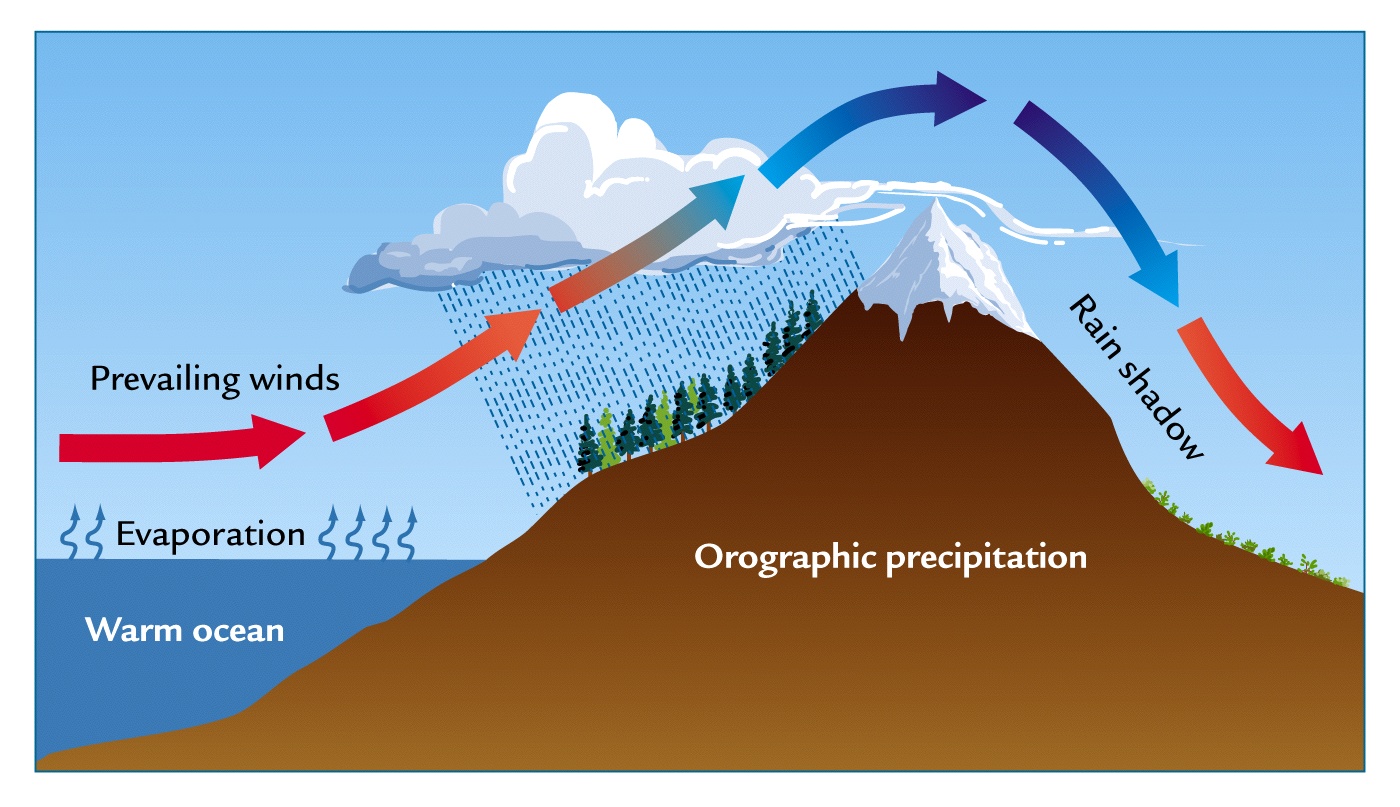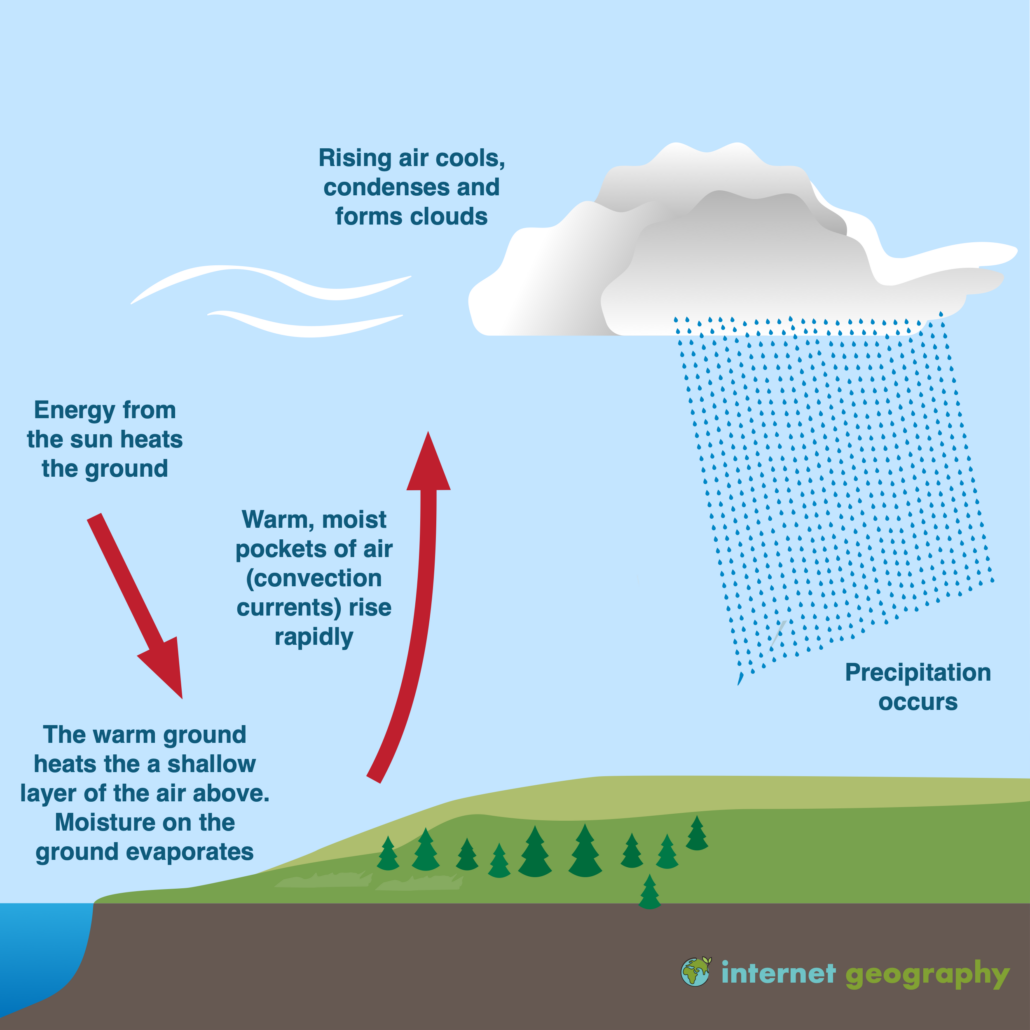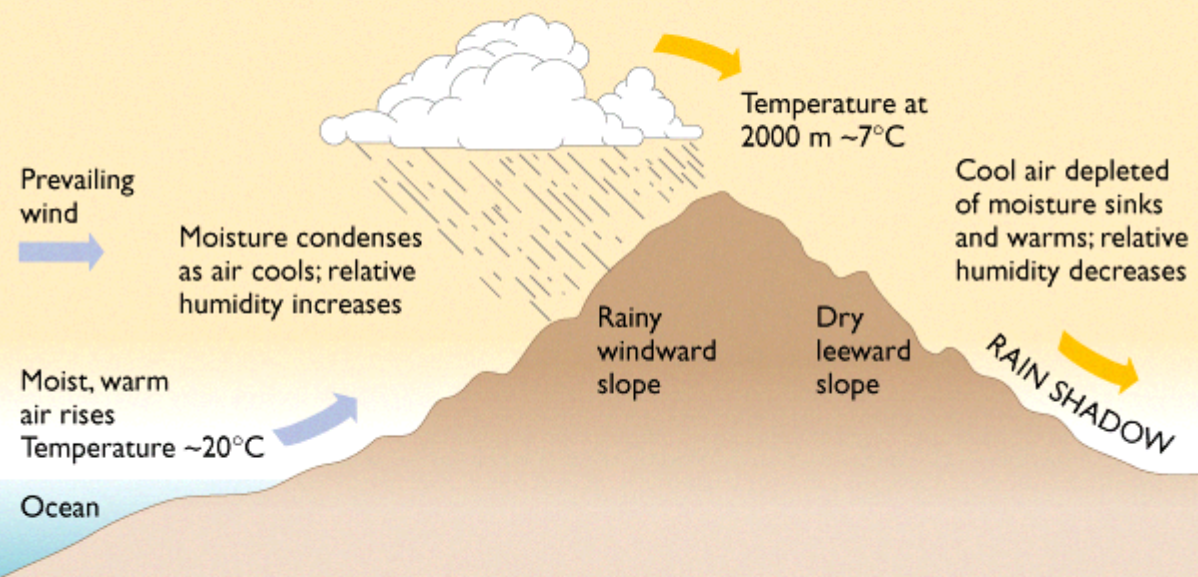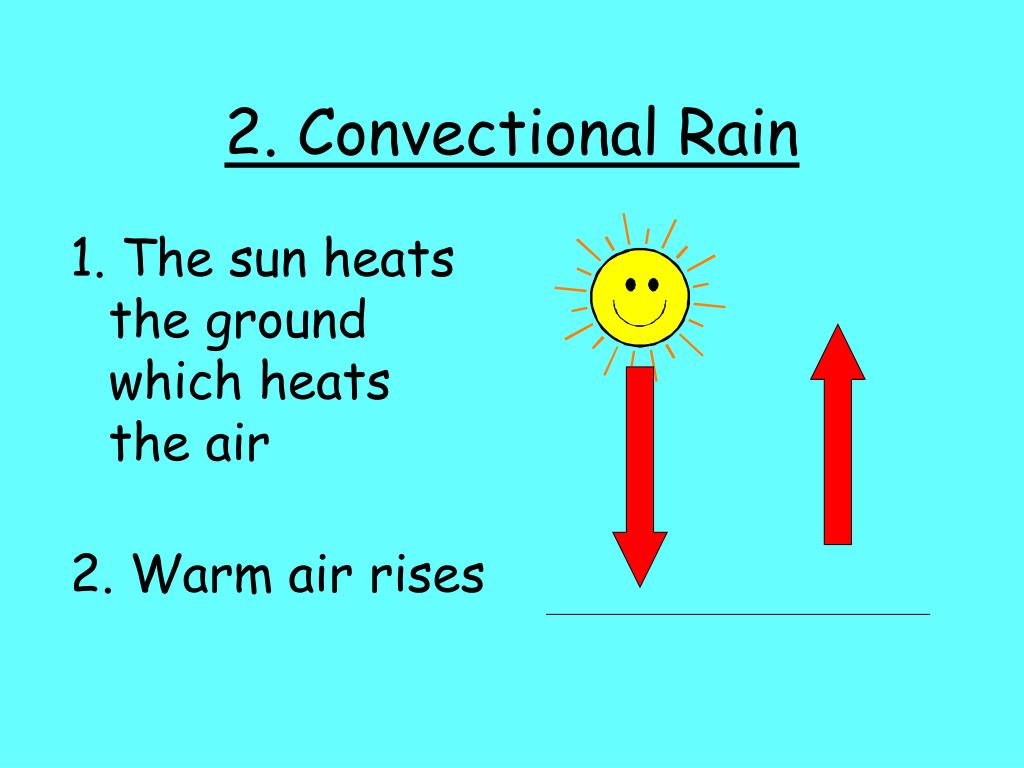
Study Notes on Precipitation
Formation of Convectional rain. Full diagram with key points of explanation.
Convectional Rainfall Labelled diagram
(You can see the cycle in this diagram.) Convectional Storms Convectional storms occur in many areas of the world. They are at their most severe in parts of the tropics where there is a water source and intense heating. They are also common in warm mountain areas like the European Alps in the summer.
Convectional Rainfall Labelled diagram
It occurs when two air masses with different temperatures collide. The colder air mass being denser stays closer to the surface while the warmer air mass rises above it. As the warm air rises it cools and condenses to form clouds which bring rain thereafter. Read more How is rainfall measured? | What does 1 mm rainfall mean?
Convectional Rainfall Teaching resource
1. Convectional Rainfall Because different surface areas are heated differently, a parcel of air near the ground may be warmed by conduction more than the air around it. As the warm air is less dense, it rises to the upper strata of the atmosphere.
Convectional Rainfall Labelled diagram
Convectional Rainfall occurs over land that is subjected to the Sun's intense heat. Terrestrial radiation coming form Earth's surface heats up the lower levels of the atmosphere.

Explain the Different Types of Rain Mechanism
Orographic, Frontal, and Convectional rainfall. What do they mean? How does rain form? And in what ways?Credits:Raindrops in Super Slow Motion: By Beachfront.

Draw a labeled diagram of Frontal Rain and describe how does it occur? Brainly.in
2.2K views Convectional Rainfall The second type is called convectional rainfall. When you see thunderstorms or big gray rain clouds on a hot summer day, then you may be experiencing this.

draw a labelled diagram of conventional rainfall Brainly.in
File previews. pptx, 1.49 MB. KS3. Videos and animations of the three types of rainfall. Convectional, frontal, and relief rainfall. Key water cycle terms. Diagram drawing activity. Plenary quiz. Activities and sheets included the ppt.

Biosphere, Atmosphere and Hydrosphere Types of rainfall
Detailed diagram explaining how the sun's energy will cause surface water to evaporate and rise in the atmosphere condensing to form convectional rain clouds.

PPT Types of rainfall PowerPoint Presentation, free download ID1275400
Activities Convectional R ainfall This type of rainfall occurs in summer months for the UK and brings heavy rainfall and violent thunderstorms to our country. Short wave radiation arrives at the earth's surface and is converted to long wave HEAT energy. This heat energy heats the air above it.

CONVECTIONAL RAINFALL PDF
In this video we will learn different types of rainfall / precipitation - the convectional, orographic or relief and the cyclonic or frontal rainfall. This t. CBSE Exam, class 10

types of rainfall convectional rainfall diagram Types of rainfall, Climate change activities
There are three types of rainfall explain with suitable diagram:-Convectional rainfall; Orographic rainfall; Cyclonic rainfall. Orographic Precipitation or Rainfall | UPSC - IAS. Orographic precipitation results when warm moist air moving across the ocean is forced to rise by large mountains. As the air rises, it cools; this is because a.

draw a well labelled diagram showing orographic rainfall Brainly.in
Start studying Geography- convectional rainfall. Learn vocabulary, terms, and more with flashcards, games, and other study tools.

how does it rain why does it rain rain diagram How does it rain, Preschool learning
Environmental Chemistry Types of Rainfall - Relief, Convectional, and Frontal Rainfall In some countries, it rains all the time, which plays a major role in the growth of grass and crops. As we can see that Ireland is such a green country because of heavy rain there.

Meaning & Types of Rainfall Convectional, Orographic & Cyclonic Rainfall. YouTube
Convectional rainfall occurs when the sun's energy heats the surface of the Earth, causing water to evaporate to form water vapour. When the land heats up, it warms the air above it, causing it to expand and rise. As the air rises, it cools and condenses. This process of condensation forms clouds high in the atmosphere.

Precipitation
Contents [ hide] What is convectional rainfall? Definition of Convectional Rainfall The Process of Convectional Rainfall Step 1 - Heating Step 2 - Rising Step 3 - Cooling and Condensation Step 4 - Precipitation Characteristics of Convectional Rainfall Examples of Convectional Rainfall Tropical Regions Hot Summer Months in Temperate Regions